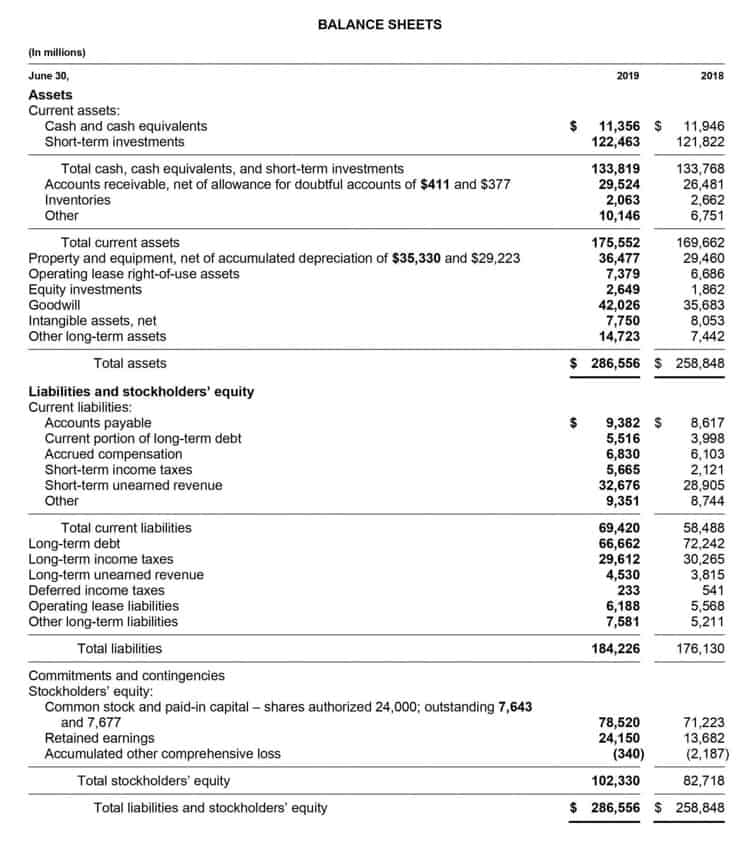
Discounting means selling or Bookkeeping for Veterinarians pledging a customer’s notes receivable to the bank at some point prior to the note’s maturity date. The accounts receivable is just as valid a claim as are the notes receivable, as well as the interest. Although it may seem peculiar to record interest revenue on defaulted notes receivable, the Zoe Company is still obligated to pay both the interest and the principal. At this point, the note should be transferred to an open account receivable.

Would you prefer to work with a financial professional remotely or in-person?
- Clients often pay fees to a registered investment advisor every four months, billed in advance.
- If the maker pays the bank, the contingent liability will end; if the maker defaults, the contingent liability will become a real liability.
- As such, the bank receives its money back plus the discount when the note is paid by the maker at maturity.
- Properly managing notes receivable is crucial for accurate financial statements and strategic decision-making.
Note that the interest component decreases for each of the scenarios even though the total cash repaid is $5,000 in each case. In scenario 1, the principal is not reduced until maturity and interest notes receivable in balance sheet would accrue over the full five years of the note. For scenario 2, the principal is being reduced on an annual basis, but the payment is not made until the end of each year. For scenario 3, there is an immediate reduction of principal due to the first payment of $1,000 upon issuance of the note. The remaining four payments are made at the beginning instead of at the end of each year. This results in a reduction in the principal amount owing upon which the interest is calculated.
Further Reading: How To Calculate Net Credit Sales: Formula and Examples for Efficient Accounting

When a buyer Accounting Periods and Methods doesn’t adhere to the payment terms, the seller can approach its customer and offer new terms or some other remedy to collect on the bill. The Notes Receivable account is an asset account shown on the Statement of Financial Position (IFRS)/ Balance Sheet (ASPE). Notes Receivable are similar to Accounts Receivable in that money is owed to the company by its debtors. Accounts Receivable is typically money owed to the entity by customers/clients based on invoices that have been issued to them.
isCompleteProfile ? “Setup your profile before Sign In” : “Profile”
- These instruments serve as a formal promise for future cash inflows, which can affect a company’s financial strategy and its relationships with clients and lenders.
- Notes receivable are an essential element of financial reporting, representing claims for payments not immediately realized.
- Notes receivable are a balance sheet item that records the value of promissory notes that a business is owed and should receive payment for.
- 11 Financial’s website is limited to the dissemination of general information pertaining to its advisory services, together with access to additional investment-related information, publications, and links.
- Notes arising from loans usually identify collateral security in the form of assets of the borrower that the lender can seize if the note is not paid at the maturity date.
- This is done by giving a discount on notes receivable to a bank or other lender prior to their maturity date.
At the end of year 3, the notes receivable balance is $10,000 for both methods, so the same entry is recorded for the receipt of the cash. It is common knowledge that money deposited in a savings account will earn interest, or money borrowed from a bank will accrue interest payable to the bank. The present value of a note receivable is therefore the amount that you would need to deposit today, at a given rate of interest, which will result in a specified future amount at maturity. The cash flow is discounted to a lesser sum that eliminates the interest component—hence the term discounted cash flow. The future amount can be a single payment at the date of maturity or a series of payments over future time periods or some combination of both. Notes receivable are typically placed in the assets section of the balance sheet, just like accounts receivable.
The lower the number, the less efficient a company is at collecting debts. An asset management firm that opts to bill in arrears, on the other hand, would temporarily have an A/R balance on its balance sheet, usually for only a day or two as fees are taken from client custody accounts. If the note is due within one year of the balance sheet date, it is classified as current.
Double Entry Bookkeeping

This will be illustrated when non-interest-bearing long-term notes receivable are discussed later in this chapter. Frequency of a year is the amount of time for the note and can be either days or months. This is done by giving a discount on notes receivable to a bank or other lender prior to their maturity date.

How confident are you in your long term financial plan?
- The percentage that Square charges stays constant until the loan is paid off fully.
- At the end of the three months, the note, with interest, is completely paid off.
- The Fenton Company should also indicate the default on the Zoe Company’s subsidiary accounts receivable ledger.
- The lower the number, the less efficient a company is at collecting debts.
- He has been a manager and an auditor with Deloitte, a big 4 accountancy firm, and holds a degree from Loughborough University.
- A note receivable expected to be repaid within a year is typically classified as a current asset.
- Discounting means selling or pledging a customer’s notes receivable to the bank at some point prior to the note’s maturity date.
Notes receivable are initially recognized at the fair value on the date that the note is legally executed (usually upon signing). On 31 December 2018, the company had a note receivable from Mr. Goldstein representing such advances. The note, amounting to $64,349.44, bears interest at 18% and is due on 31 December 2019. If the note is not paid and was discounted without recourse, no further entry is needed. This type of liability is not disclosed in the balance sheet but should be described in a footnote if it is material.
